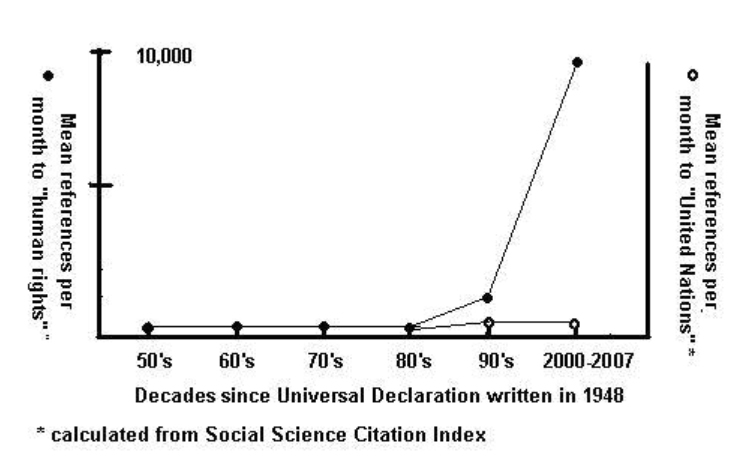(Une version française suit en dessous)
This summer and fall is seeing an increase in the number of international conferences dedicated to the culture of peace and basing their analysis on the Declaration and Program of Action for a Culture of Peace that was adopted 20 years ago by the UN General Assembly.
The UN resolution provides a holistic, positive view of peace. For each of the eight aspects of the culture of war, it proposes the alternative as described here. The resolution proposes specific actions to promote each of these eight program areas. And furthermore, it calls for a global movement for a culture of peace through partnerships between an among international, national and civil society organizations promoted through sysems of information exchange (such as the Culture of Peace News Network) on their initiatives.
The struggle for a culture of peace could gain much more force if this resolution were used as the basis for analysis and practice by more organizations around the world, but unfortunately it is relatively unknown.
The situation reminds me of the use of another landmark UN document, the Universal Declaration of Human Rights (UNDHR).
The adoption of the UNDHR by the UN General Assembly in 1948 did not immediately yield results. For the first 40 years the document sat on the shelf and was rarely mentioned, as shown in the following graph which shows the citations of human rights in academic publications as monitored by the Science Citation Index. It has only in recent years that references have exploded into thousands of times per year.
Figure drawn from my book World Peace throught the Town Hall.
Now over 70 years after its adoption, the Universal Declaration of Human Rights has been taken up by thousands of other organizations and struggles in all social movements as a powerful tool for justice.
We may assume that the increased attention to human rights after the 1970s was largely due to the Nobel Peace Prize of 1977 to Amnesty International because of their efforts for human rights.
Hopefully, we will not have to wait another 20 years for such effective use of the Declaration and Programme of Action on a Culture of Peace. The work for culture of peace has been nominated for the Nobel Peace Prize in recent years, and if it were to be recognized by the Prize, that could help produce the kind of universal recognition and historical impact as that of the UNDHR.
* * * * *
La résolution des Nations Unies pour la culture de la paix
Pour cet été et cet automne, le nombre de conférences internationales consacrées à la culture de la paix a augmenté. Leur analyse est souvent basée sur de la Déclaration et Programme d’action pour une culture de la paix adoptés il y a 20 ans par l’Assemblée générale des Nations Unies.
La résolution de l’ONU offre une vision globale et positive de la paix. Pour chacun des huit aspects de la culture de la guerre, il propose une alternative (voir ici). La résolution propose des actions spécifiques pour promouvoir chacun de ces huit domaines de programme. En outre, il appelle à un mouvement mondial pour une culture de la paix par des partenariats entre des organisations internationales, nationales et de la société civile, promues par des systèmes d’échanges et d’informations (comme CPNN) sur leurs initiatives.
La lutte pour une culture de la paix pourrait gagner beaucoup plus de force si cette résolution était utilisée comme base d’analyse et de pratique par plus d’organisations dans le monde, mais malheureusement, elle est mal connue.
La situation me rappelle l’utilisation d’un autre document historique des Nations Unies, la Déclaration universelle des droits de l’Homme (DUDH).
L’adoption de la DUDH par l’Assemblée générale des Nations Unies en 1948 n’a pas immédiatement donné de résultats. Pendant les 40 premières années, le document était sur l’étagère et rarement mentionné, comme l’illustre le graphique ci-dessous, qui montre les citations des droits de l’Homme dans des publications universitaires suivies par le Science Citation Index. Ce n’est que ces dernières années que les références ont explosé des milliers de fois par an.
[Figure tirée de mon livre “Paix mondiale à travers les municipalites”.]
Aujourd’hui, plus de 70 ans après son adoption, la Declaration universelle des droits de l’Homme a été reprise par des milliers d’organisations et de luttes dans tous les mouvements sociaux, en tant que puissant outil de justice.
Nous pouvons supposer que l’attention accrue portée aux droits de l’Homme après les années 1970 était largement due au prix Nobel de la paix de 1977 attribué à Amnesty International en raison de ses efforts en faveur des droits de l’Homme.
Espérons que nous n’aurons pas besoin d’attendre encore 20 ans pour une utilisation aussi efficace de la Déclaration et du Programme d’action pour une culture de la paix. L’œuvre pour la culture de la paix a été nominée pour le prix Nobel de la paix ces dernières années. Si elle devait être reconnue par le prix, elle pourrait contribuer à produire le type de reconnaissance universelle et d’impact historique de la DUDH.

